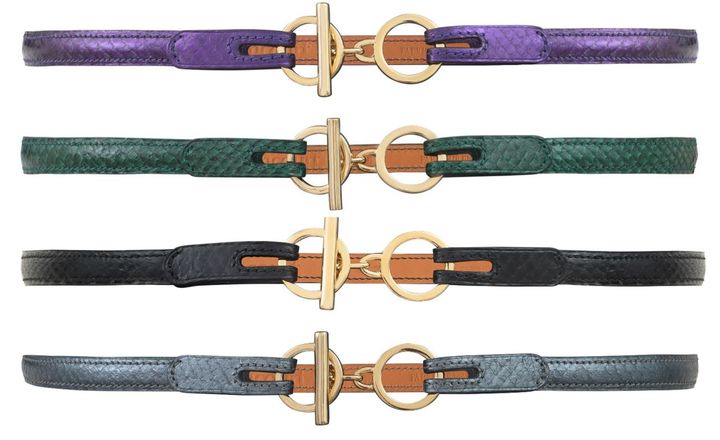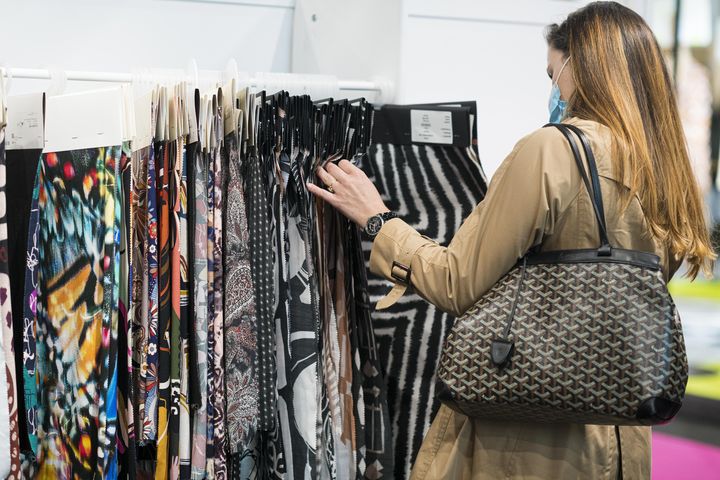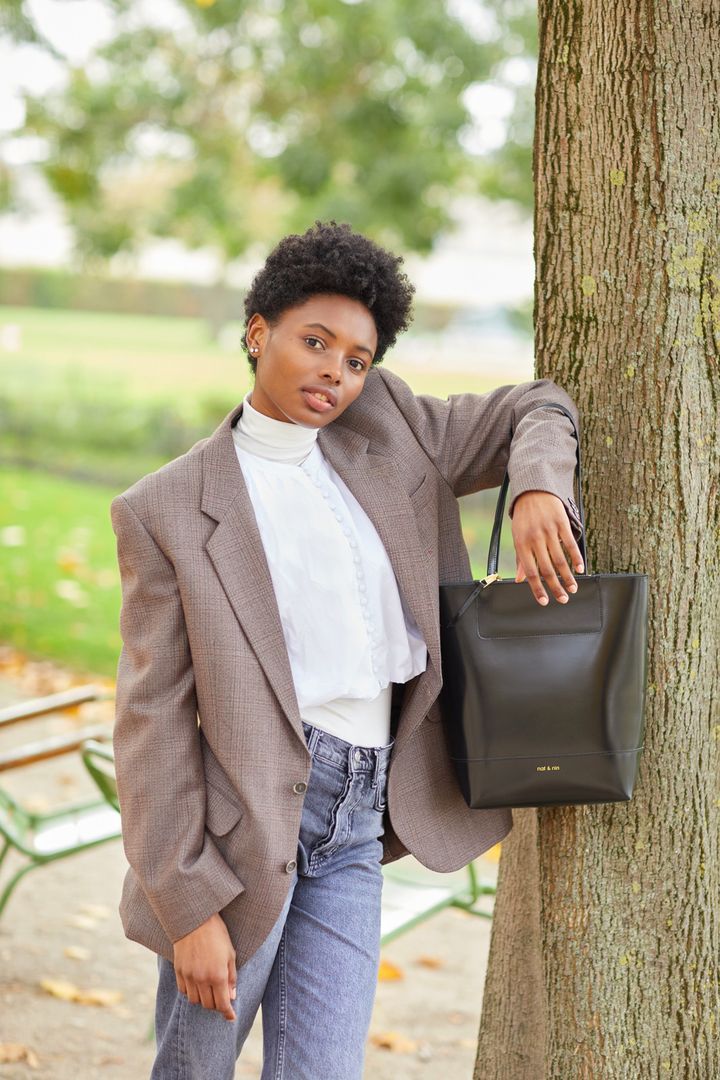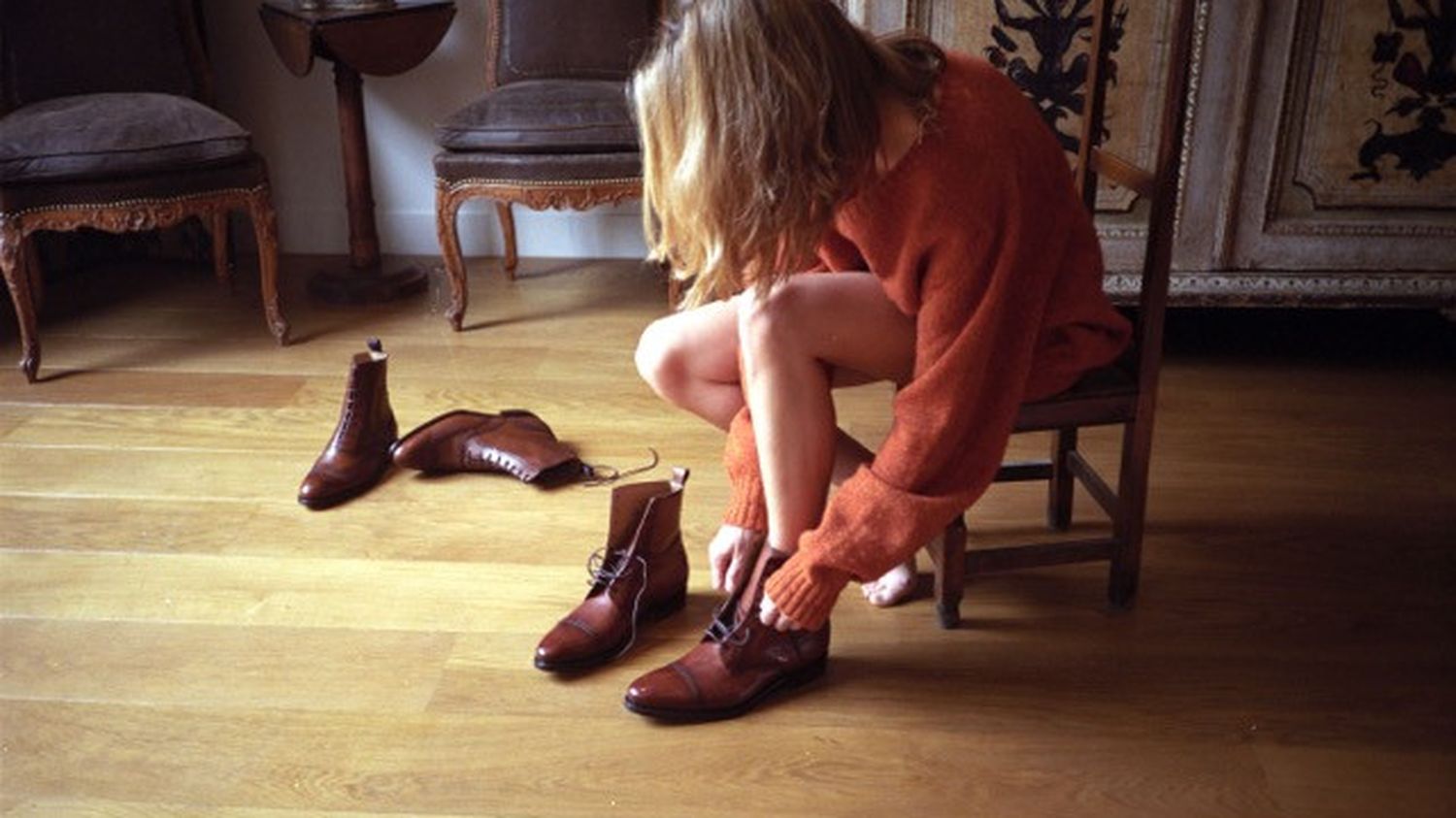Since the dawn of time, man has collected the skin of the animals on which he feeds to transform it and clothe himself with it. This reuse of part of the animal intended to be thrown away makes the leather industry an example of upcycling – recovering unused materials or products to transform them into materials or products of higher quality and/or utility.
Carine Montarras, fashion project manager at Première Vision, highlighted during the Fashion Rendez-Vous show, which was held on June 30 and July 1, 2021 in Paris, that “LThe total food industry waste avoided, thanks to the French Leather Industry, represents 170,000 tonnes per year, the equivalent of the weight of 24 Eiffel Towers.
Subject to strict regulations, the tanning industry extends the performance of leather by making it more innovative and developing a new generation of materials. RKnown for its quality and resistance over time, leather can be repaired, purchased second-hand or rented… and is therefore part of a circular economy approach. Explanations.
Synthetic, vegan, vegetable leather: incorrect indications
Materials – which some brands call leather “vegan” Or “vegetal” – have become trendy in recent years because they have been presented as more ethical than leather (to meet the needs of consumers who are looking for responsible brands committed to an ecological and environmentally friendly approach). The animal cruelty argument and the defense of leather vegan being then highlighted, to the point that consumers and creators turned away from it: Karl Lagerfeld stopped using exotic skins in 2020 while American Vintage stopped using angora in 2021.
Yet “materials not derived from the processing of animal skin are excluded from the term leather” indicates the National Leather Council and, in particular, synthetic materials from petrochemicals or of plant origin. This abuse of language can mislead the consumer. According to a decree of 2010: “eis called leather, any material from the tanned skin of an animal (cow, lamb, goat, fish, etc.) but cannot be called leather any material of synthetic or vegetable origin presenting an appearance similar to that of leather “. So leather “vegan”, “wooden”, “apple”, “pineapple”, “mushroom”, “eco-leather”, “imitation leather”, “synthetic”, “flyleather” and “fruit” are misnomers.
The consumer must also pay attention to the use of names “vegetable leather” And “vegetable tanned leather”, which must “refer to leathers tanned using vegetable tannins (oak, beech, etc.)” further specifies Carine Montarras, fashion project manager at Première Vision. So thehe leather goods brand Pranay, which has opted for vegetable-tanned leathers, uses natural products such as tree bark or rose buds which make the leather strong, water-resistant and rot-proof.

Alternative materials to leather
FILK (Institute For Leather & Synthetic Materials), a German testing and research institute, has published a comparative study on the physical properties of leather and nine so-called alternative materials composed of cactus, apple, pineapple, mushrooms and other plants. The study reveals “that none of these alternative materials have the natural qualities of leather in terms of wear, longevity and resistance to cracking, permeability, water absorption and tearing”. This study also shows that some of these materials “contain some components of synthetic origin (such as polyurethane) or even traces of substances harmful to health (such as phthalates)”.

“These new materials have been developed to replace imitation leather such as skai” specifies Carine Montarras. “These are coated canvases with reduced ecological impact made, for example, with an organically sourced material (from the food industry) mixed with a binder (polyurethane) on a canvas (Apple skin – Frumat, Vegéa, Pinatex…). They haves different levels of durability from leather but they are not biodegradable.”
In addition, biotechnology companies, designers and artisans are developing “of the interesting products based on algae, mycellium…” she indicates.
Leather traceability
At a time when consumers, in search of a green attitude, is mobilizing for the future of the planet, it is demanding more and more information on the origin of skins. Whether to improve the quality of skins or to guarantee the origin of leather, French tanners and tanners are subject to strict regulations regarding the environment and virtuous practices, recalls the National Leather Council: “France is, today, innovative by offering laser marking of raw hides, traditionally marked in batches, up to the processing stages. This technique allows the slaughterhouse to ensure traceability between the animal and the skin by marking it with a laser with a unique code.
Made from a natural raw material, leather is resistant, rot-proof and breathable. Its flexibility and elasticity give it numerous applications and an inimitable feel thanks to the tanning industry which extends its performance by making it ever more innovative: water-repellent, machine washable, printable, perfumed, stretchable, ultra light, tactile, etc.
“There are also recycled leathers and other upcycled ones (revaluation of salmon skins and sturgeon, rabbit whose aspects are quite close to exotic skins…)” precise Again Carine Montarras. Already, brands are committed to this path. Nat & Nin develops recycled leather accessories: pieces of recovered leather are collected then crushed and mixed with natural latex to create a shopping bag and two pouches glossy matte black finish. This range produced from reconstituted leather is part of a sustainability approach and is in addition to a vegetable tanning line present since 2019.a brand of eco-responsible and feminine shoes, Being Amis fights against waste by giving new life to quality materials from unused stocks. She finds leathers, heels and shapes from dormant stocks, overproduction, archives or vintage collections.

Repair, second hand and rental on the rise
With the desire for more sustainable consumption, use value is being reinvented and the means to extend the lifespan of products are multiplying. RKnown for its quality and strength, leather promotes repair, second-hand purchases and the use of rental.
The restoration of bags or shoes has always been practiced among leather artisans. The French brand of sneakers Sessile offers models eco-designed, repairable and manufactured in France from natural or recycled components as much as possible or recyclable. The company also invented a process for dismantling shoes: once worn, they can be returned to the manufacturer to be processed and put back on the second-hand market. If they are too damaged, they are then recycled and transformed into soles. Shoe designer Philippe Zorzetto has teamed up with Sessile to create green sneakers made with eco-designed raw materials (vegetable-tanned leather, recycled rubber soles) which are made in France in the French workshop Manufacture 49.
Leather opposes obsolescence as management emphasized by JM Weston: “We are fortunate that our customers wear our models for a long time. This gives us time to explain to them that we design our models with the idea of wearing them for a lifetime, or even of passing them on one day. This requires being able to rely on repair services which today can go as far as completely reassembling the shoe to follow new trends, and this while maintaining the patina properties of the upper. Few materials in the world can claim this life span across several generations. The major brands that operate in export (Kering, LVMH, Hermès, etc.) have also developed workshops and train artisans in major cities around the world.
With vintage and second hand, which allows you to recycle already worn clothing or accessories, there is no more overconsumption. Leather in this area has advantages: resistant, it has a noble patina and can be passed down from generation to generation and now appeals to young people. Clara Chappaz, Chief of Growth Officer at Vestiaire Collective, underlines that, since the creation of the second-hand platform, the typology of customers has expanded beyond the younger generations Y and Z (30 years and under), who are more favorable for use and possession. Today, customers are also attracted for reasons linked to the second-hand price and others looking for vintage products that regain real value.

Finally, theThe Bocage shoe rental workshop has also been a real success: “almost 2,000 subscribers in one year on the platform”, explains Jean-Olivier Michaux, industrial director of the Eram group, who recalls that the group is committed to a program Change for Good which wishes to respond to new consumer habits.

